Staircases in Feng Shui - 4 Important Factors to Consider.

Dr. Michael Oon

The primary purpose of the staircases is to get from one floor to another. It does not matter whether you are going up or down.
With regards to staircases in feng shui, it is the location and design of the staircase that can benefit the residents, but in some cases, it can be a disadvantage.
Purpose of Staircase:
The main purpose of the staircase is to link up one floor to another in a multi-floor property. Firstly, it is for people to move up and down the stairs in safety and with ease. Secondly, it is also for the Energy (Qi) to move up and down the stairs easily
.
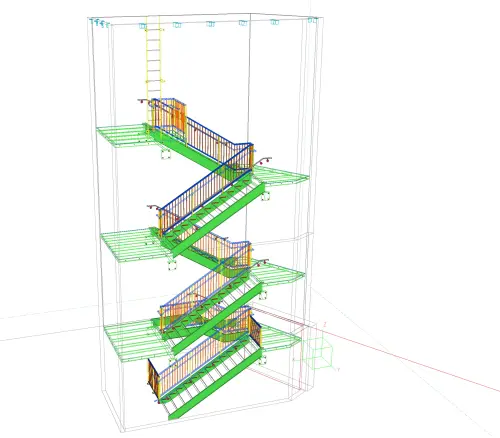
An inappropriately or poorly designed staircase would cause inconvenience or be a safety hazard to the people who use it. They would have to use the stairs with care. However, this type of staircase would also leak Energy (Qi) away from the property. The Energy (Qi) could either be obstructed or lost.
Obstruction: The whole point of feng shui is to use the Energy from the environment and distribute this Energy throughout the property. This Energy is for the benefit of the residents of the property. When the Energy is obstructed, it cannot circulate around the property. There will be one area filled with Energy and the other areas deprived. It would be of no benefit to anybody.
Loss: Energy loss is just wasteful. This needlessly deprives the family of the Energy and the feng shui benefits of health, wealth and happiness to the residents living on the property.
The Location of Staircases:
From the Feng Shui point of view, there are two locations where the staircase should not be located.
- The centre of the property: The centre is like the spine of the building, where you want strength and stillness. A staircase here does not add strength, nor does it add stillness. A staircase in the centre is a large hole with people (and Energy) moving up and down. It is not good.
- The staircase leads directly to the outside door: This is common to many properties in the UK. The Energy from the upper floors flows down the stairs to the outside. Also, it provides a distraction and occupies space in the entrance hall. The entrance hall is the location where the Energy comes into the property, settles and then is distributed to the various parts of the property. The Energy coming down the staircase disrupts the incoming Energy from the exteriors.
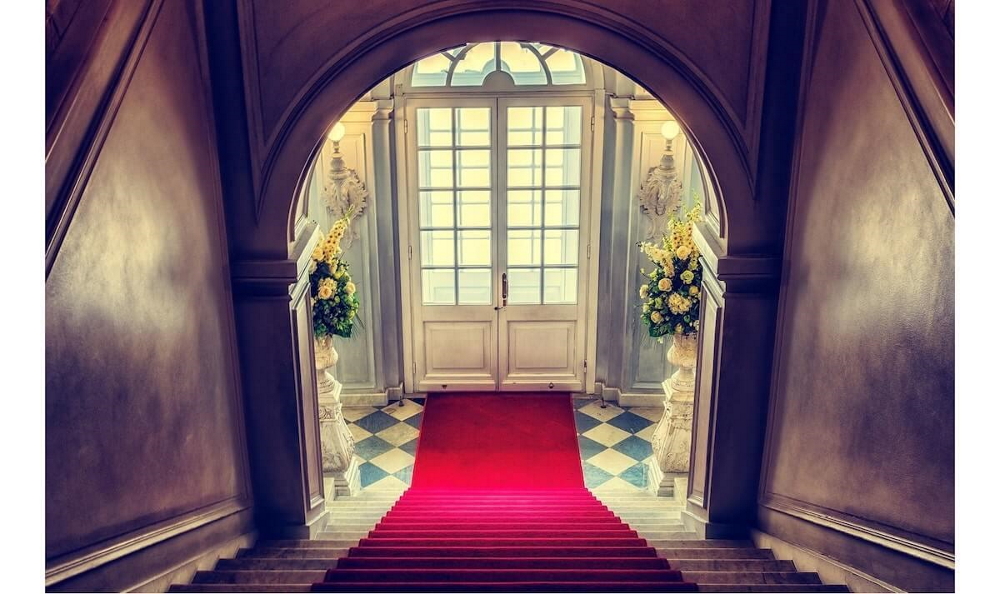
Two other locations have not been widely discussed.
Windows
- The staircase should not lead to a window. This is quite common with staircases that have a landing with either an “L” or “U” turn; if you have a window or glass panel at the level of the floor at the landing, the Energy can flow out easily. A glass panel above 1.5 meters or 4 feet could avoid this issue.
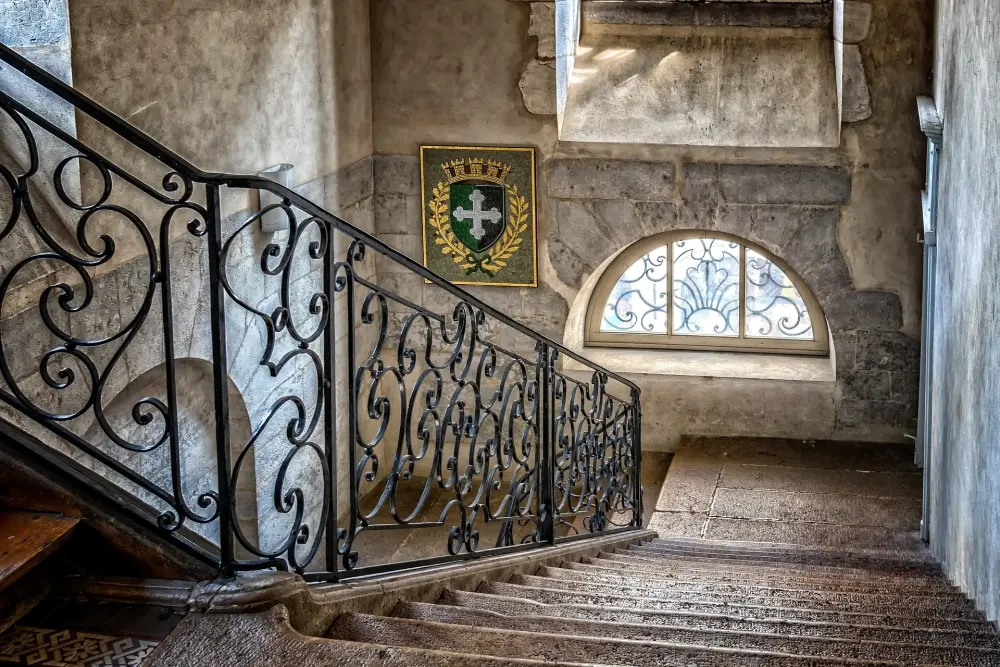
Bedrooms
It is best to have the staircase by the wall. This is not only for support of the staircase but also saves on space. The staircase away from the wall takes up space. There are other reasons why the staircase can be central to the room.
The Types of Staircases.
- Straight stairs: This is a single flight from the upper floor going down to a lower floor. This is the most common type and is seen in most properties in the UK. The Energy (Qi), in most cases, just rushes down as there is no hindrance to slow the movement.
- Stairs with Landings: There are different configurations of this type of stair. There is the single landing with the straight (to stagger the stairs), “L” or “U” shaped, the more complex double landing, which can be “U” shaped or double “L”.
These landings are places where the Energy can slow down.
- Spiral Stairs: This is a circular set of stairs built around a central pole. It is useful for small spaces. The stairs are not encased and are an open structure. This does not allow the Energy to flow either up or down.
- The Circular Stairs: This is built inside of a “tube”. It is an elegant design. These stairs are much wider, and Energy can move more easily.

Caption: A Spiral Staircase with an open structure. The circular staircase is bigger and wider.
- There are many other types of staircases are very certainly impressive but only used when there is space.
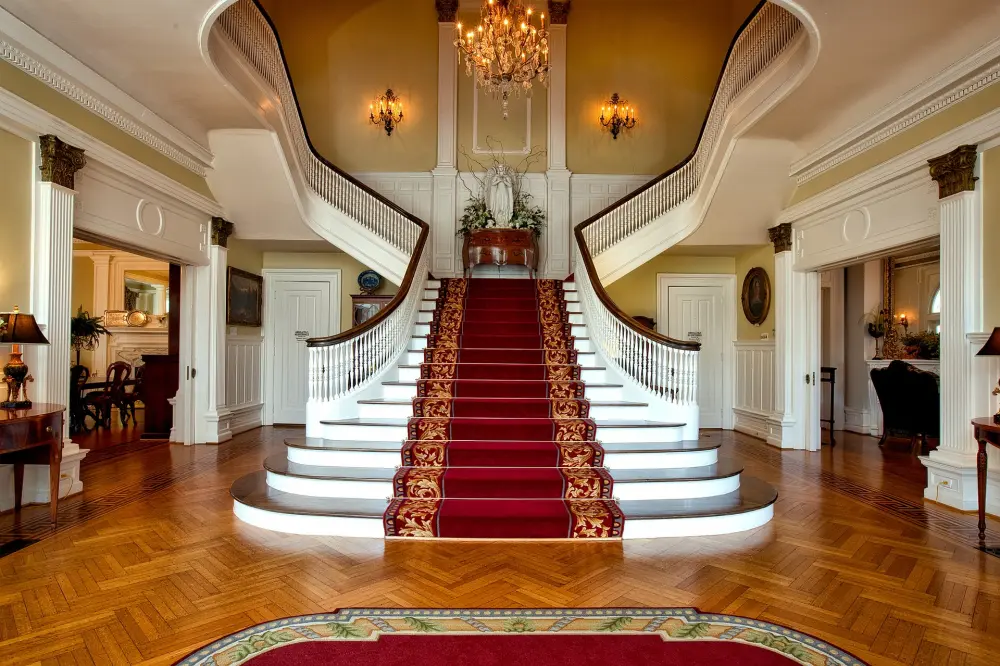
Staircases are dangerous.
Feng Shui – Staircases are dangerous places.
- It is dangerous because of the height difference with the lower level. People can easily fall either accidentally or on purpose.
In the decorative artwork of stairs, Vessel Structure in the Hudson Yards Development in New York, there are 154 interconnecting flights of stairs. It has been closed to the public because of suicides.
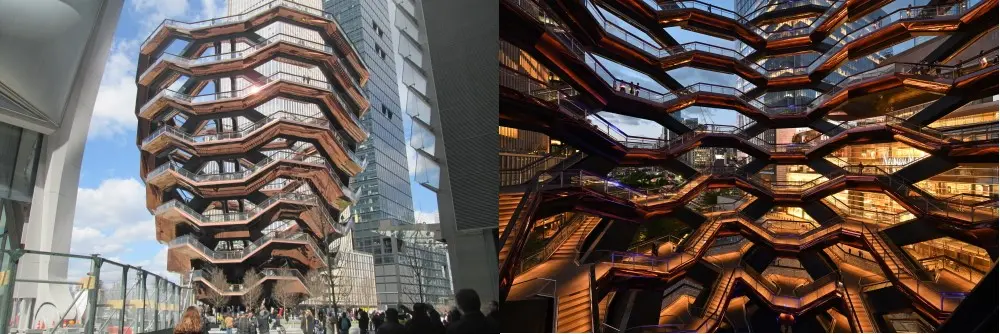
In the UK, there is a fall every 90 seconds and there were 787 reported deaths in 2015.
- The reason for accidents in staircases has been due to the design - the small depth of the step (for feet) being very shallow and the rise height (height between steps) being too large. This can make going up and down the stairs uncomfortable or, in some cases, dangerous.
This design is no longer used in new properties as there are standards in the Building Regulations – they are now standardised, and safety has improved.
- There is a need to have bannisters or handrails to provide support when using the stairs. There should be at least 3 points of contact at a time when using the stairs.
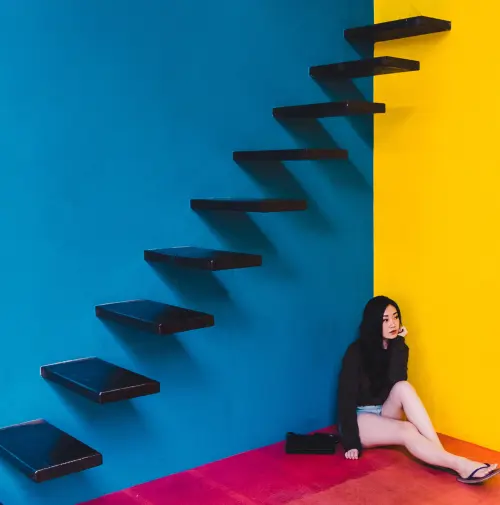
- Many domestic staircases are carpeted. These should be professionally installed so that there are NO loose fittings or objects left there. Any loose fittings can cause a trip with a resulting personal injury. Of course, objects should not be left on the staircase. It can be a trap.
- The staircase should not be narrow. It should be wide enough for two persons to pass through easily.
Staircases in Feng Shui Comments:
- Straight staircases are the most common because of space limitations and cost. The Energy (Qi) comes down the stairs unhindered and easily. This is made even worse when the staircase faces an outside door. The hard-earned gained Energy that has been brought in from the outside environment is lost to the outdoors.
- On the structure of the stairs, Energy can only go up the stairs when there is a closed thread and foot panel. The Energy will always leak through the gaps in the stairs. Hence, a complete or “full stairs” structure is preferred.
- Spiral Stairs: These stairs are not liked in Feng Shui. The curves of the stairs are too tight, and the stairs are open (just wooden panels or a metal framework). They are not closed. There is no movement of Energy (Qi) either up or down. The Energy (Qi) just goes past it.
- Circular Stairs: These are stairs that are built in a large tube. The outer walls support the stairs. These stairs require a lot of space and are found in business or public buildings. The construction of the stairs is complete, and the curvature is large. Under these conditions, the Energy can move both up and down easily.
- The preferred staircase in feng shui is a staircase with landings. This breaks up the flight. It not only allows the person using the stairs to have a “rest” or break, it allows the Energy to slow down and settle.
The landings can be used for stairs that are going straight, with “L” or “U” bends. It does not matter about the configuration; it is the landings that are of feng shui benefit.
- Of course, the stairs are to be complete with foot tread and riser. This will enable the Energy to go up and down the stairs.
My Overall Comment about Staircases in Feng Shui - Staircases are essential in Modern Living but use it with care.

